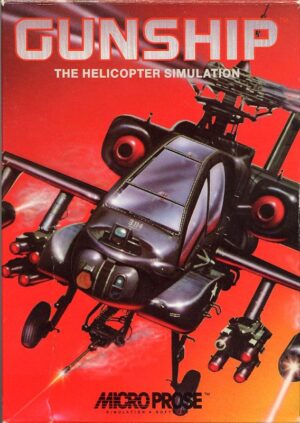Retro Replay Review
Gameplay
Wonder Boy in Monster Land blends fast-paced platforming with light role-playing mechanics, creating an addictive loop of exploration, combat, and upgrades. You guide Tom-Tom—now honored as Wonder Boy—through twelve diverse locations, from the bustling city of Wonder Land to the shifting sands of the Mam Desert. Each area is dotted with monsters, environmental hazards, and hidden nooks that reward curiosity.
Combat relies on timing and positioning: your starting sword offers limited range, but as you gather gold and bags of cash dropped by foes, you unlock increasingly powerful weapons, shields, armor, and boots. These gear upgrades not only boost your attack and defense stats but also change how you approach enemy encounters. Do you invest in a heavier weapon for greater damage at the cost of speed, or pick boots that increase your jump height for tricky platform sections?
The game’s time-limit mechanic adds tension: an hourglass ticks down as you explore, and if it empties, your health begins to drain. To replenish it, you can duck into bars for a drink that restores the gauge and provides cryptic hints about upcoming challenges, or visit hospitals to recover lost life points entirely. This dual system of health and time management keeps you on your toes and encourages strategic use of in-town stops between treks into Monster Land.
Boss battles cap off each region, requiring mastery of your current equipment and patterns. Defeat a boss to claim a gold key that unlocks the exit gate, along with bonus cash rewards. These encounters progressively ramp up in difficulty, testing your reflexes, upgrade choices, and understanding of monster behavior. Overall, the gameplay strikes a satisfying balance between action, resource management, and RPG progression.
Graphics
On the Sega Master System, Monster Land’s visuals remain impressive even decades later. Character sprites are crisp and colorful, capturing Wonder Boy’s adventurous spirit with expressive animations. Monsters range from slithering serpents to fire-breathing dragons, each enemy boasting unique palettes and movement patterns that stand out against the backgrounds.
Level design shines through distinct environmental motifs in each of the twelve locations. The Valley of Peace features lush greenery and stone ruins, the Coastal Town of Baraboro is framed by crashing waves and sandy docks, while the Pororo Islands introduce tropical hues and palm-shadowed platforms. These varied settings keep the journey visually fresh and encourage you to anticipate new obstacles.
Special effects, though limited by 8-bit hardware, are used effectively: flashing coins scatter realistically from downed foes, fireballs leave a brief trail as they arc toward you, and hourglass timers shimmer when they appear. Transitions between areas feature seamless scrolling and parallax layers that convey depth, immersing you in Wonder Land’s gradual descent into Monster Land’s chaotic reign.
While modern standards may call for higher resolutions, Monster Land’s artistry and strong color contrasts ensure that enemies and pick-ups are always clearly identifiable. The overall presentation delivers charm, personality, and clarity—key ingredients for an engaging retro action-RPG.
Story
The narrative picks up eleven years after Tom-Tom’s heroic rescue of Tanya and the defeat of the evil King. Now celebrated as Wonder Boy, he has enjoyed over a decade of peace and prosperity alongside the citizens of Wonder Land. This backstory sets a triumphant tone before the tranquility is shattered by the ominous rise of a ferocious fire-breathing dragon.
When the dragon’s monstrous army overruns the kingdom, Wonder Land is plunged into chaos and renamed Monster Land. The people’s cries for salvation reach the palace, and once more, Tom-Tom is called to action. As Wonder Land’s last hope, he embarks on a perilous quest to restore harmony by destroying the dragon and his henchmen.
Each of the twelve areas Tom-Tom explores reflects a step deeper into the dragon’s corruption. From the familiar streets of Wonder Land to the scorched dunes of the Mam Desert, the narrative unfolds through environment and gameplay rather than lengthy cutscenes. Occasional bar patrons and hospital staff offer snippets of lore and strategic tips, weaving story elements organically into the experience.
The minimalistic storytelling suits the era: it never overwhelms the action, yet provides enough context to motivate your progression. You understand why you fight, where you’re going next, and what’s at stake—saving Wonder Land’s people and reclaiming the peace you once enjoyed.
Overall Experience
Wonder Boy in Monster Land stands out as a pioneering action-RPG hybrid on the Master System. Its tight controls, engaging upgrade paths, and clever time-limit mechanic create a captivating gameplay loop that few contemporaries matched. Even today, the addictive “just one more run” allure remains potent.
The game’s challenge curve rewards persistence. Early levels ease you in, while later stages and bosses demand careful gear selection and pattern recognition. For players who relish retro difficulty and methodical progression, Monster Land offers lasting appeal. Casual gamers may find certain segments tough, but the frequent checkpoints and in-town resupplies balance the difficulty spikes.
Visually and sonically, the title captures the spirit of late-’80s console adventures. Its pixel art and chiptune soundtrack evoke nostalgia without feeling dated, and the variety of locations ensures the journey never drags. The password system lets you pick up where you left off, adding modern convenience to a classic format.
For anyone curious about the roots of action-RPGs or seeking a vintage challenge, Wonder Boy in Monster Land remains a standout title. Its engaging blend of platforming, combat, and resource management provides a rewarding experience that continues to win over new fans, even over thirty years after its initial release.
 Retro Replay Retro Replay gaming reviews, news, emulation, geek stuff and more!
Retro Replay Retro Replay gaming reviews, news, emulation, geek stuff and more!









Reviews
There are no reviews yet.